|
Damselflies are really pretty insects that can be found in most any light gap in the forest, as well as around the ponds and some trails. And while in the sunlight they seem to sparkle and iridesce, at night they just grab onto a plant stem and sleep away until daybreak. Fun fact is that this suborder, Zygoptera, is known to be relatively unchanged for some 250 million years. Must be a pretty good design to still be around for that long.
0 Comments
There are a lot of species of bugs here, and some can be quite hard to figure out. The ones that are all or mostly black are certainly the toughest. So I am going to note that I think this is a big-legged plant bug in the genus Acanthocephala but really can't be sure. I have found members of this genus here before but that just might not matter given the diversity at the FCRE.
There are many species of cockroaches here, even some lime green ones, but we have not yet gotten around to figuring them all out. Here is one of the large ones we see in the forest at night, not in the buildings.
This quite large basilisk wandered right past the Program House after lunch today. Probably the biggest one I've ever seen here and well over two feet long it sat in the sun for a while and then headed off. They have the nickname Jesus Christ lizard due to their unusual ability to run across water, something we see here often enough when approaching the upper ponds. Very prehistoric looking critters.
For the past few years there has been a project studying the golden silk orb-weaver spider (Nephila clavipes). These spiders tend to prefer open areas and the tall grass along the access road can have a lot of them.
This ringed kingfisher was seen along the Rio Cacao. It is the largest of the kingfishers here and not super common. There was also one of the small green kingfishers with it but it bugged off into the forest before I could get much of a look at it.
These very attractive large birds come by when the trees are fruiting at the FCRE, and right now we've been seeing them every day.
Katydids and tree crickets can be heard at the FCRE almost constantly. They are part of what can make a rain forest quite loud at times. And katydids often have super long antennae. They were so long here even when I was trying to get a shot of the whole animal I still ended up not getting the entire antennae in the frame.
Not my best photo ever but saw this very attractive bug along the waterfall trail.
The order Hymenoptera includes over 100,000 species of ants, wasps and bees. Some key species I can identify but in general, well, no. Here are some wasps living under a leaf at the FCRE.
|
AuthorKeith Christenson - Wildlife Biologist Categories
All
Author
Keith Christenson Wildlife Biologist Archives
September 2021
|


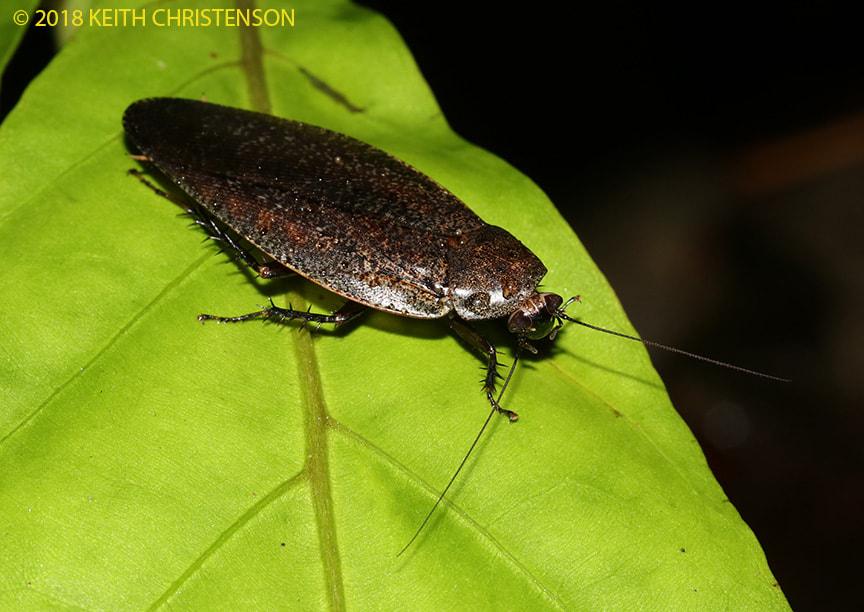
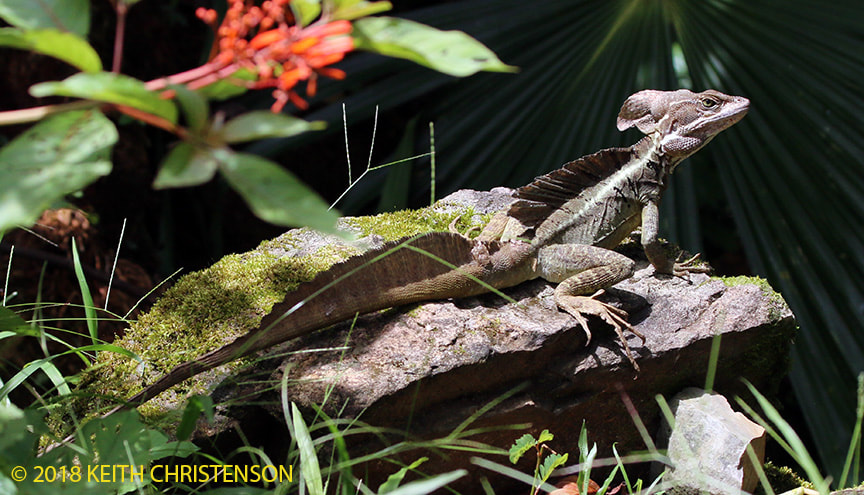

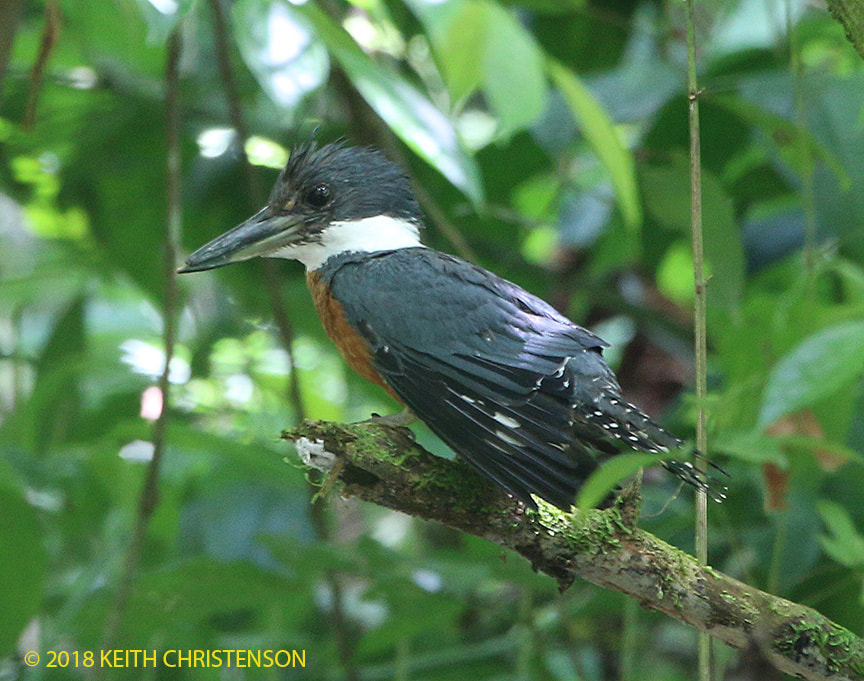

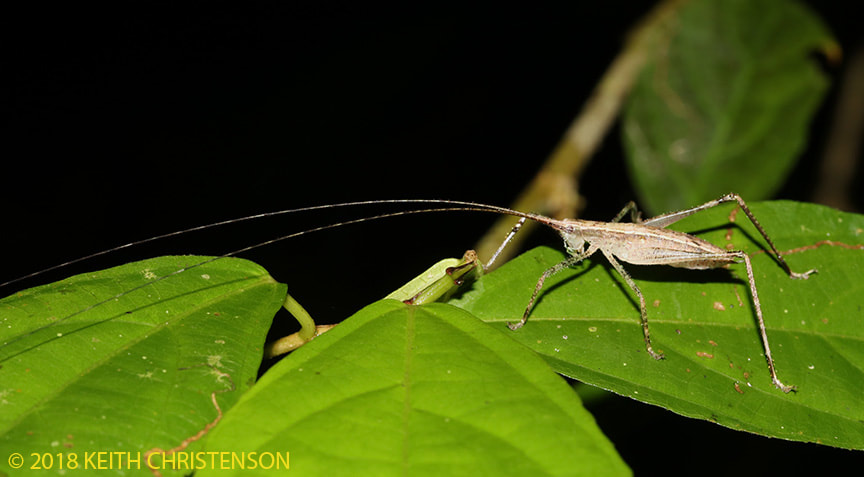

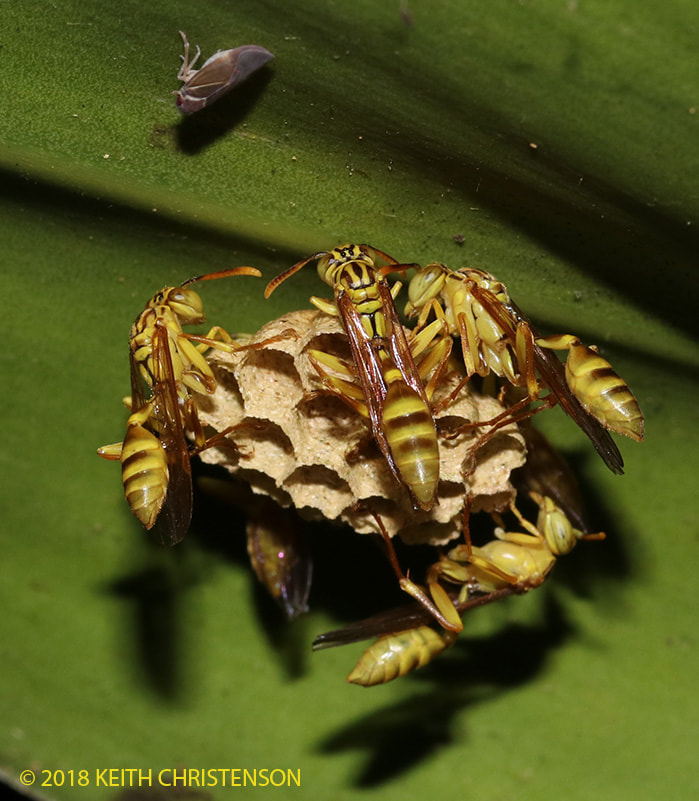
 RSS Feed
RSS Feed